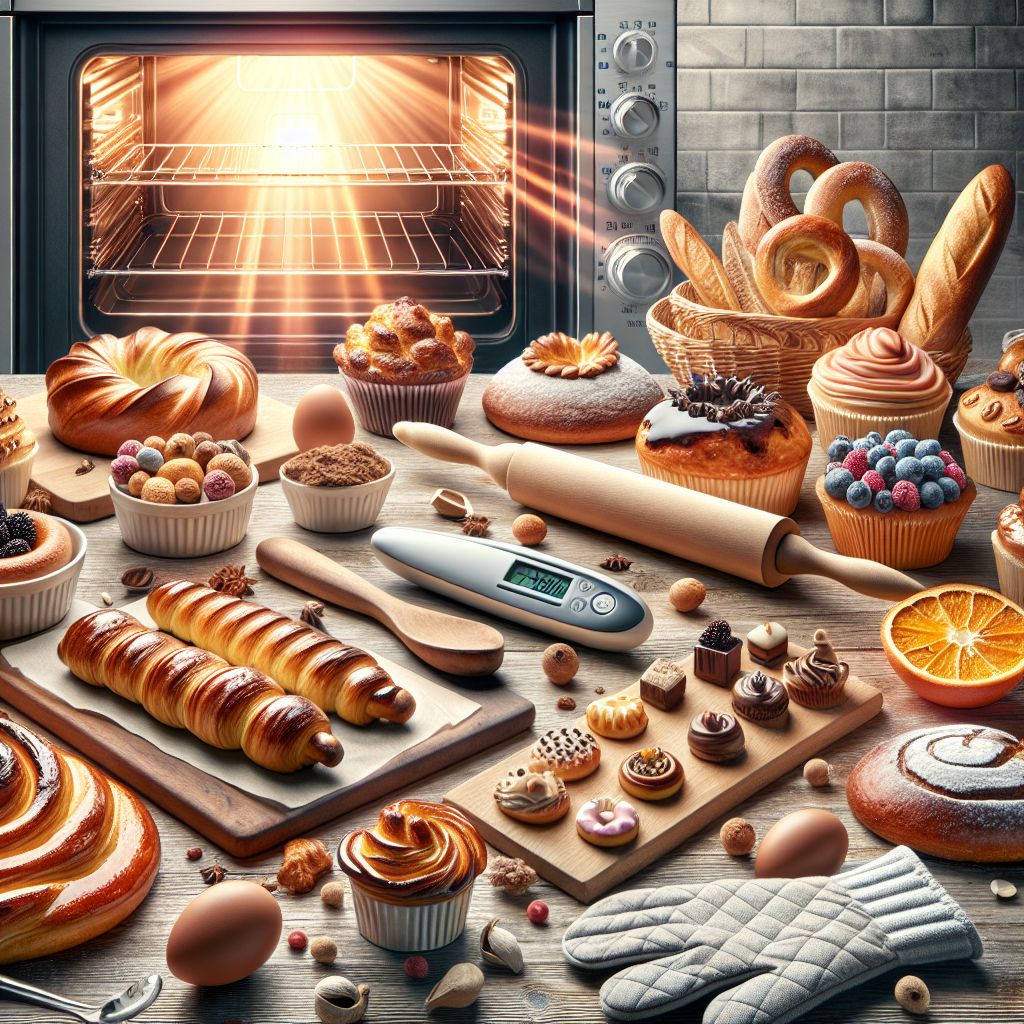Baking is often viewed as a precise science, where the right combination of ingredients must be blended at optimal temperatures to achieve perfect results. Whether you’re a seasoned baker or just starting, understanding key baking temperatures can elevate your culinary creations from good to extraordinary. Let’s explore what you need to know about the essential baking temperatures for various baked goods.
The Importance of Oven Temperature
Oven temperature is crucial in baking, affecting everything from texture to flavor. Each type of baked good has an ideal temperature range that helps achieve the desired outcome. Here’s a breakdown of some common baking temperatures and their effects:
1. Cakes and Cupcakes (325°F – 375°F)
Cakes and cupcakes typically bake best at medium temperatures, generally between 325°F and 375°F. Lower temperatures allow for even cooking and prevent over-browning.
- Tip: If a cake is browning too quickly, you can cover it loosely with aluminum foil to allow it to cook through without burning the top.
2. Cookies (350°F – 375°F)
Cookies often require a similar range, usually between 350°F and 375°F.
-
Crispy vs. Chewy: Baking cookies at a higher temperature will yield crispier edges, while lower temperatures result in a softer, chewier texture.
- Tip: For consistently shaped cookies, chill the dough before baking to firm it up.
3. Bread (375°F – 425°F)
Bread requires a higher baking temperature, typically between 375°F and 425°F.
-
Crust Development: Cooking bread at these temperatures helps form a crunchy crust while keeping the inside soft and fluffy.
- Tip: Steam can enhance crust formation—place a pan of water in the oven during the first few minutes of baking for better results.
4. Pies and Tarts (400°F – 425°F)
Pies and tarts need high temperatures at the beginning to ensure the crust cooks thoroughly and becomes flaky, generally between 400°F and 425°F.
- Tip: You can start baking at a high temperature for 15-20 minutes, then lower it to finish cooking the filling.
5. Brownies (325°F – 350°F)
Brownies generally prefer a lower temperature of 325°F to 350°F.
- Fudgy vs. Cake-like: The baking temperature plays a significant role in the final texture—lower temperatures yield fudgier brownies, while higher temperatures produce cake-like ones.
6. Meringues (200°F – 250°F)
Meringues require a low temperature, typically between 200°F and 250°F.
- Slow Drying: This low heat allows the egg whites to dry slowly, preventing cracks and achieving that light, airy texture.
Calibration and Convection
1. Know Your Oven
Every oven is different; calibration may be necessary to ensure accurate temperatures. Use an oven thermometer to verify that your oven is reaching the desired temperature.
2. Convection Baking
If you’re using a convection oven, reduce your baking temperature by approximately 25°F. The fan circulates hot air, cooking food more evenly and efficiently.
Conclusion
Mastering the key baking temperatures is crucial for achieving the perfect baked goods. Whether you’re crafting a delicate angel food cake or a crusty loaf of bread, understanding the science behind baking temperatures will enhance your skills and results. So, preheat that oven, gather your ingredients, and get ready to create mouthwatering treats with confidence! Happy baking!

